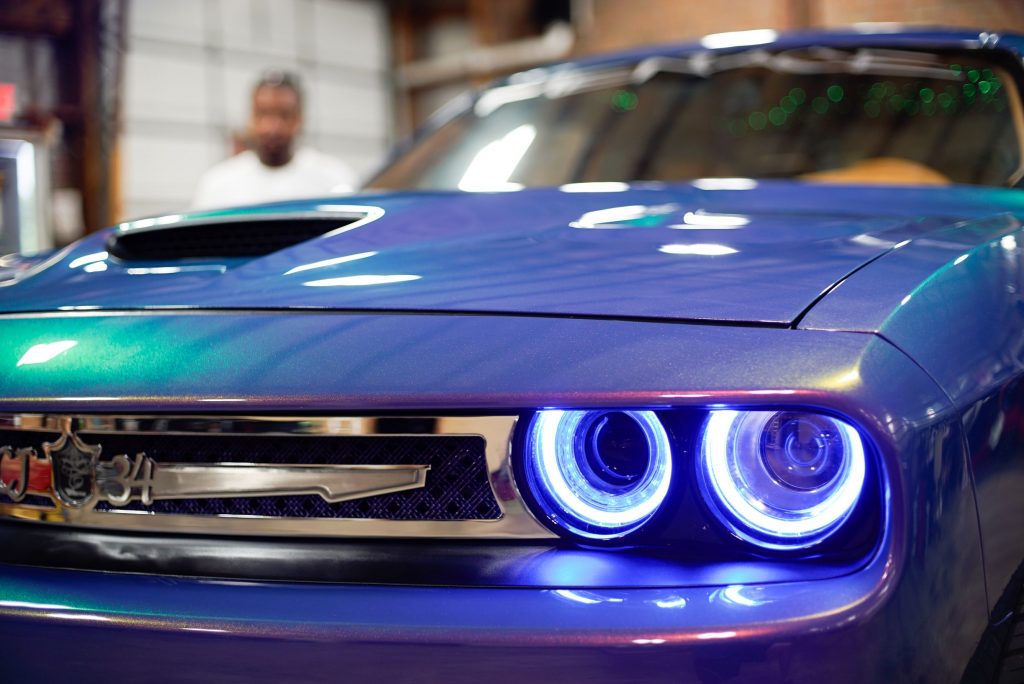Can You Put Led Lights in Any Car
Even if your car's headlights aren't adaptive, they're still an important safety feature. After all, if you can't see the oncoming danger, how can you avoid it? That's why, to try and counter poor headlight performance, many turn to LED bulbs to brighten up the road. And since LED headlights aren't always standard, that often means trying to fit the bulbs in halogen housings. But trying to upgrade your lights that way isn't always worth the hassle or expense.
LED headlight bulbs aren't drop-in halogen replacements
It's important to note that LED headlights are distinct from halogen ones. And while some advertise the former as 'LED bulbs,' that's actually incorrect terminology, Daniel Stern Lighting explains.
Halogen headlights work like traditional incandescent bulbs, Carfax explains. Inside the bulb is a tungsten filament (the 'heating element') surrounded by halogen gas. As current flows through the element, it starts to glow, releasing light and heat. Xenon bulbs, aka 'high-intensity discharge' bulbs, lack the filament; instead, they use electrical current to directly heat xenon gas, Advance Auto Parts explains.

LED headlights, though, don't work the same as either of these two, The Retrofit Source explains. They work by passing electricity through semiconductors, which release light, Cars.com explains. They use no gas and contain no filaments.
LEDs have a few advantages over halogens. They're brighter but consume less power, don't heat up as much, and take up less space. However, XenonPro explains, you can't simply replace a halogen bulb with an LED assembly. While there are conversion kits available, they have a few drawbacks.
Firstly, although the LEDs themselves run cooler than halogens headlights, they heat up everything around them. As a result, not only do they need separate current regulators, they need dedicated cooling accommodations. So, while the individual LEDs may be smaller, the entire headlight conversion kit may take up more space overall.
Secondly, converting halogen headlights into LED ones might not actually improve visibility. And that has to do, not just with the lights themselves, but with what's around them.
The problem with headlight reflectors
All automotive headlights need ways to focus the light their bulbs/LED assemblies produce. It's especially vital for LEDs, Chehalis Collision Center explains because unlike halogen bulbs, their light isn't omnidirectional. Without something to bend or reflect their light, they'd still be brighter than halogens, but only in one direction.
And that's the biggest problem with trying to convert halogen lights to LED ones, Jalopnik explains. Modern car headlights typically use either projectors or reflectors, PowerBulbs reports. Both use mirrors to reflect light, with the latter using a lens to further focus it.
However, as Daniel Stern Lighting explains, unless the headlight assembly is shaped with the 'bulb' technology in mind, it won't distribute light properly. The space right in front of your car might be a bit brighter, Tacoma World forum users explain, but further out, it may actually be darker.
RELATED: Drivers Say This Common SUV Design Feature is a 'Detriment to Safety'
Plus, even though LEDs are brighter, they don't always improve visibility, Consumer Reports, and The Drive report. Sometimes, halogen headlights are actually the better choice. Because LEDs are so bright, OEMs sometimes have to 'tone down' the reflective mirrors. Otherwise, they'd broadcast a solid wall of light, Jalopnik explains.
In addition, LEDs produce more glare at short distances. In front of a wall, it looks like they're giving off more light than halogens. But that's not necessarily what you want in, say, a snowstorm.
Finally, even if LED headlights throw more short-distance light, they don't always do the same at longer distances. That's the difference, Diode Dynamics explains, between lumens and lux. The former is about output, the latter about illumination. Just because an LED puts out more lumens, doesn't mean it'll put out more lux.
How can you upgrade your lights?
While LEDs aren't always the best halogen replacement, there is another headlight that does benefit from an LED upgrade: a sealed beam. Sealed beam headlights are similar to halogen ones, CarID explains, in that they use filaments. However, when the bulb burns out, the whole assembly gets replaced. Hence the 'sealed' in 'sealed beam': it's one sealed unit.
Because of this construction, sealed beam LED conversions don't run into the reflector/projector issue, Autoblog explains. The new housing is designed to work with the bulb from the start.
RELATED: The Best Headlight Cleaner and How to Keep Your Headlights Clean
However, even if you have halogen lights, you may not need to upgrade. If you've noticed your headlight lenses look foggy or cloudy, it's possible to restore them. In addition, the bulbs may be improperly aligned, Cars.com reports. Luckily, the readjustment process requires little more than a tape measure, some tape, and a screwdriver.
Follow more updates from MotorBiscuit on our Facebook page.
Can You Put Led Lights in Any Car
Source: https://www.motorbiscuit.com/giving-your-old-car-led-headlights-usually-isnt-worth-it/